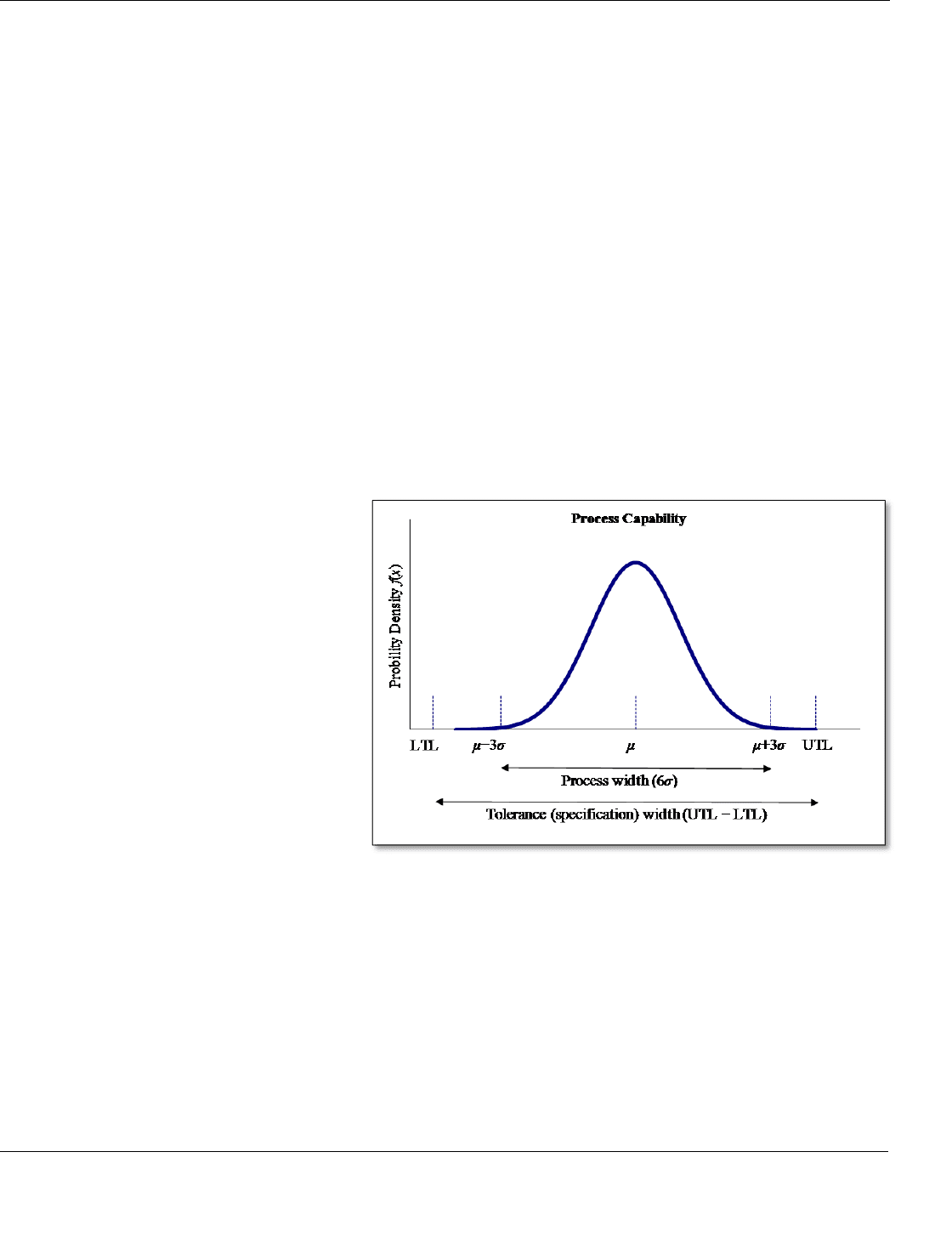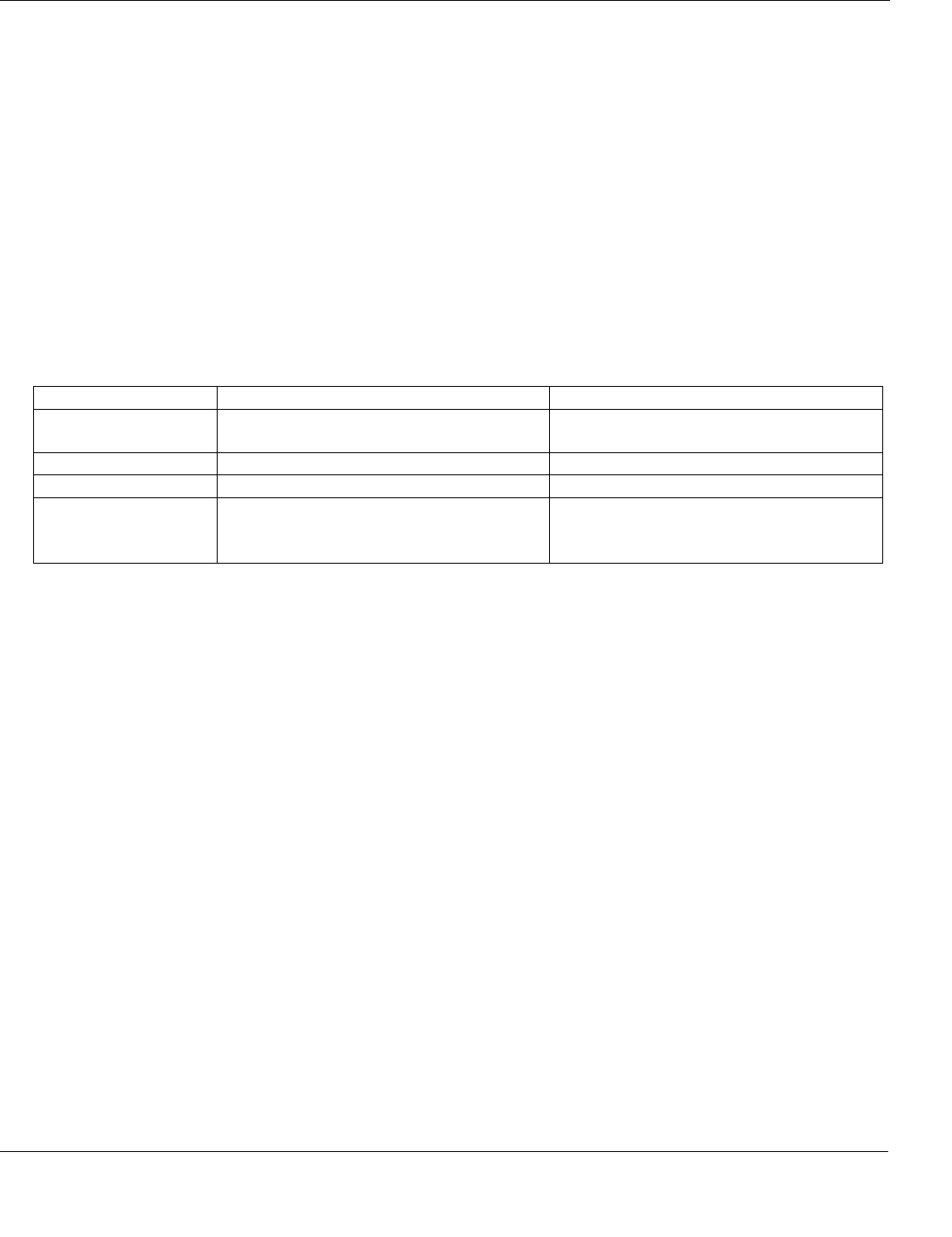Hill A.V. The Encyclopedia of Operations Management: A Field Manual and Glossary of Operations Management Terms and Concepts
Подождите немного. Документ загружается.


ptg6843605
Pollaczek-Khintchine formula – pooling
The Encyclopedia of Operations Management Page 266
Pollaczek-Khintchine formula – A relatively simple queuing formula that relates the standard deviation of the
service time to the mean number of customers in queue for a single server queuing system.
The formula itself can be found in the queuing theory entry.
See queuing theory.
POMS – See Production Operations Management Society.
pooling – A practice of combining servers to reduce customer waiting time or combining inventory stocking
locations to reduce inventory.
Operations managers often have to decide if it is better to have separate channels (each with its own queue)
or to combine them into one queue (waiting line). Similarly, operations managers often have to decide if it is
better to hold inventory in separate stocking locations or to combine them into a single stocking location. This is
called the pooling problem. An queuing example is used here to explore the benefits of pooling.
A firm has two technical experts, with one on the East Coast and one on the West Coast. Customers on the
West Coast are only allowed to call the West Coast expert; and the same is true for the East Coast. The average
interarrival time
45
for customers calling the technical experts is a = 0.4 hours on both coasts. The average service
time for the two identical experts is p = 0.3 hours. The utilization for each expert is /
p
a
= 0.3/0.4 = 75%.
(Be careful to not confuse
and p.) The coefficient of variation for the interarrival time is 1, and the coefficient
of variation for the service time is also 1 (e.g., c
a
= 1 and c
s
= 1). Each expert is analyzed separately, which
means that the number of servers is s = 1. Using the approximate G/G/s model (see the queuing theory entry),
the average queue time is:
2 2
2( 1) 1 2(1 1) 1
2 2
0.3 0.75 1 1
0.9 hours
1 2 1 (1 0.75) 2
s
a p
q
c c
p
W
s
Therefore, customers will have to wait about 0.9 hours on average for each expert.
If the organization were to combine the two lines to form just one line for the experts, it would “pool” the
systems and have only one line. In this case, the interarrival time for the combined system is half that of the
separate systems (i.e., a = 0.2 hours), but the average service time remains the same (p = 0.3 hours). Again,
using the approximate G/G/s model but with s = 2 servers, the average queue time for this system is:
2 2
2( 1) 1 2(2 1) 1
2 2
0.3 0.75 1 1
0.395 hours
1 2 2 (1 0.75) 2
s
a p
q
c c
p
W
s
Therefore, customers in the “pooled” system have to wait about 0.4 hours on average. In this case, pooling
reduced the average waiting time by about one-half (from 0.9 hours to 0.4 hours), a very significant difference.
Why is the pooled system so much better? The answer is that in the old system, one expert could be idle
while the other had customers waiting in line. In other words, the pooled system makes better use of the experts.
The benefits of pooling are often significant. The main point here is not the queuing model, but rather the
fact that many systems can often be improved by pooling resources. Pooled systems can often make better use of
resources, reduce the waiting time for customers, and reduce the risk of long waiting times.
Examples of this pooling concept can be found in many contexts:
The dean of a business school centralized all tech support people for the school into one office instead of
having one assigned to each department. The pooled resource provided faster and better support.
Delta Airlines shares parts with other airlines in Singapore. This reduces the risk of any airline not having a
needed part and reduces the required investment.
Xcel Energy shares expensive power generator parts with many other firms in the Midwestern U.S.
A large service firm reduced average waiting time by consolidating its call centers in one location.
Pooling also has disadvantages. When a service firm consolidates its call centers, some local customers
might not experience service that is culturally sensitive, particularly if the call center is moved to another
country. Also, large call centers can experience diseconomies of scale. Putting all operations in one location can
be risky from a business continuity standpoint, because a disaster might put the entire business at risk. Finally, in
45
This is the average time between arrivals for customers.

ptg6843605
POQ − predatory pricing
Page 267 The Encyclopedia of Operations Management
a queuing context, if the mean service times for the customer populations are very different from one another, the
pooled coefficient of variation of the pooled service time will increase and the average time in queue will also
increase (Van Dijk & Van Der Sluis 2007).
See addition principle, call center, consolidation, diseconomy of scale, postponement, queuing theory, slow
moving inventory.
POQ – See Period Order Quantity.
portal – See corporate portal.
Porter’s Five Forces – See five forces analysis.
POS – See Point-of-Sale.
post-mortem review – See post-project review.
post-project review – The practice of appraising a project after it has been completed to promote learning for (1)
the members of the project team, (2) the sponsoring organization, and (3) the wider organization; also called
post-mortem review, project retrospective, and post-implementation audit.
Organizations should seek to learn from their successes and failures. Organizations that do not do this are
doomed to repeat their mistakes over and over again. This is a critical activity for successful project
management. Gene Heupel of GMHeupel Associates recommends that process improvement project teams
conduct three activities at the end of a project: (1) create a project completion notice, (2) conduct a post-project
review, and (3) create a project closing report. Each of these is discussed briefly below.
The project completion notice is serves several purposes, including (1) verifying that the deliverables in the
project charter have been completed, (2) defining the plan to sustain the implementation, and (3) releasing the
team and establishing the end-of-project activities. Heupel recommends that the project team have the project
sponsor sign this document.
The post-project review is a comprehensive review conducted by the project team to ensure that the team
and the organization have learned as much as they can from the project. Lessons learned from this review are
documented in the project closing report. It is important to remember that the purpose of this review is not to
blame people, but rather to help the organization learn from the project experience so that going forward it will
retain the good practices and improve the poor ones.
The project closing report contains all of the significant documents related to the project as well as lessons
learned from the post-project review. This report becomes an important part of the organization’s knowledge
base going forward. The project is not complete until the sponsor has signed off on the project closing report.
In many contexts, the post-project review might also (1) assess the level of user satisfaction, (2) evaluate the
degree to which the stated goals were accomplished, and (3) list further actions required.
See deliverables, forming-storming-norming-performing model, implementation, lean sigma, learning
organization, project charter, project management, sponsor.
postponement – The principle of delaying differentiation (customization) for a product as long as possible to
minimize complexity and inventory; also called delayed differentiation, late customization, and late
configuration.
Forecasting the demand for standard products is relatively easy, and the inventory carrying cost for these
products is relatively low. However, forecasting demand for products differentiated for a particular channel or
customer is much harder, and the carrying cost is often high due to obsolescence. Firms will likely have too
much inventory for some differentiated products and too little for others. If a firm can delay the differentiation of
the products until after the customer order has been received, the finished goods inventory is eliminated.
Postponement is a form of pooling, where the organization pools the inventory as long as possible before the
customer order requires differentiation.
Postponement is a foundational principle for mass customization. Postponement principles often allow an
organization to change from make to order to assemble to order or configure to order, which allows the firm to
reduce customer leadtime or increase customization. The point at which products are customized for customers
is called the push-pull boundary.
For example, HP was able to standardize its printers and put all country-specific power management
technology in the cord. This allowed for lower inventory and better customer service.

ptg6843605
predatory pricing – print on demand
The Encyclopedia of Operations Management Page 268
See agile manufacturing, customer leadtime, mass customization, New Product Development (NPD),
operations strategy, pooling, push-pull boundary, respond to order (RTO), standard products.
predatory pricing – The practice of selling a product or service at a very low price (even below cost) to drive
competitors out of the market and create barriers to entry for potential new competitors.
After a company has driven its competitors out of the market, it can recoup its losses by charging higher
prices in a monopoly relationship with its customers. Predatory pricing is against the law in many countries.
See antitrust laws, bid rigging, bribery, price fixing.
predictive maintenance – See maintenance.
premium freight – Additional charges paid to a transportation provider to expedite shipments.
Premium freight can be used for bringing purchased materials into a facility and delivering products to
customers. Premium freight is used when the normal freight method cannot provide needed materials in time for
a production schedule. An increase in premium freight for purchased materials suggests that the firm should
consider freezing more of the master production schedule (i.e., move out the time fence).
Similarly, premium freight is used when the normal freight method cannot deliver finished goods to
customers by the promised delivery dates. An increase in premium freight for delivering products to customers
suggests that the firm may be over-promising on its delivery dates to its customers.
See logistics, time fence.
prevention – Work to design and improve products and processes so defects are avoided.
Prevention cost is the cost associated with this work and includes product design, process design, work
selection, worker training, and many other costs. The cost of quality suggests that investing in prevention will
generally reduce appraisal (inspection) cost, internal failure cost, and external failure cost. However, many firms
find that prevention cost is the hardest component of the cost of quality to measure.
See cost of quality, error proofing, Failure Mode and Effects Analysis (FMEA), rework, sentinel event.
preventive maintenance – See maintenance.
price elasticity of demand – See elasticity.
price fixing – Agreement between competitors to set an agreed-upon minimum price.
Price fixing inhibits competition and therefore forces customers to pay more than they would in a
competitive environment. Price fixing is an illegal practice in many countries.
See antitrust laws, bid rigging, bribery, predatory pricing, purchasing.
price of non-conformance – See cost of quality.
primacy effect – A concept from psychology and sociology that suggests that people assign disproportionate
importance to initial stimuli or observations.
For example, if a subject reads a long list of words, he or she is more likely to remember words read toward
the beginning of the list than words read in the middle. The phenomenon is due to the fact that short-term
memory at the beginning of a sequence of events is far less “crowded,” because fewer items are being processed
in the brain.
The recency effect is a similar concept from psychology and sociology that suggests that people assign
disproportionate importance to final stimuli or observations.
In summary, the primacy and recency effects predict that people will remember the items near the beginning
and the end of the list. Lawyers scheduling the appearance of witnesses for court testimony and managers
scheduling a list of speakers at a conference take advantage of these effects when they put speakers they wish to
emphasize at the beginning or end. In measuring customer satisfaction, it is well-known that customers place
undo emphasis on their first and most recent customer experiences (“moments of truth”).
See moments of truth, service quality.
primary location – See random storage location.
Principal Component Analysis (PCA) – A statistical tool that transforms a number of possibly correlated
variables into a smaller number of uncorrelated variables called principal components.
The first principal component accounts for as much of the variability in the data as possible, and each
subsequent component accounts for as much of the remaining variability as possible.
See cluster analysis, factor analysis.

ptg6843605
print on demand − pro bono
Page 269 The Encyclopedia of Operations Management
print on demand – A customer interface strategy of printing books, manuals, and other materials in response to a
customer order rather than creating an inventory; also called POD, publish on demand, and print to order.
Print on demand requires a printing process that can efficiently handle small printing batch sizes. Print on
demand is a mass customization strategy made possible by computer-based printing technologies. Ideally, print
on demand has nearly zero setup time, setup cost, finished goods inventory, and obsolete inventory.
See mass customization, respond to order (RTO).
print to order – See print on demand.
prisoners’ dilemma – A conflict situation (“game”) in which two players can decide to either cooperate or cheat.
The prisoner’s dilemma is a classic scenario in the game theory literature that received its name from the
following hypothetical situation (Axelrod 1984). Imagine two criminals, A and B, arrested under suspicion of
having committed a crime together. However, the police do not have sufficient proof to convict them. The
police separate the prisoners and offer each of them the same deal. If one testifies for the prosecution against the
other and the other remains silent, the betrayer goes free, and the silent accomplice receives the full 10-year
sentence. If both stay silent, both prisoners are sentenced to only six months in jail for a minor charge due to
lack of evidence. If each betrays the other, each receives a two-year sentence. Each prisoner must make the
choice of whether to betray the other or remain
silent. However, neither prisoner knows what
choice the other prisoner will make. The game
is summarized in the following table.
The gain for mutual cooperation in the
prisoners’ dilemma is kept smaller than the
gain for one-sided betrayal so that players are
always tempted to betray. This economic
relationship does not always hold. For
example, two wolves working together can kill
an animal that is more than twice as large as
what either of them could kill alone.
The prisoners’ dilemma is meant to study short-term decision making where the actors do not have any
specific expectations about future interactions or collaborations (e.g., in the original situation of the jailed
criminals). Synergy usually only gets its full power after a long-term process of mutual cooperation, such as
wolves hunting deer. If two entities repeatedly face a prisoners’ dilemma with each other, a fairly good strategy
for each one is sometimes called tit for tat, which means that if you cheated on the previous move, I’ll cheat on
this move; if you cooperated on the previous move, I’ll cooperate on this move.
See
game theory, zero sum game.
private carrier – A shipper that transports its goods in truck fleets that it owns or leases.
See common carrier, logistics.
private label – A product or service created by one organization but sold by another organization under the seller’s
brand name.
The most common example is when a large retailer (e.g., Target) contracts with a manufacturer to make a
generic version of its product sold under the Target brand. Private label is a common practice in consumer
packed goods and white goods.
See category captain, category management, consumer packaged goods, Original Equipment Manufacturer
(OEM), picking, white goods.
privatization – The process of moving from a government owned and controlled organization to a privately owned
and controlled for-profit organization; spelled privatisation in most of the world outside of the U.S.
pro bono – To work for the public good without charging a fee; short for the Latin pro bono publico, which means
“for the public good.”
When lawyers, consultants, and other professionals work “pro bono,” they work without charging a fee.
Some organizations provide pro bono services, but then prominently mention the gift in their marketing
Prisoner’s dilemma
Prisoner B
B stays silent B betrays
Prisoner A
A stays silent
Both serve
6 months
A serves 10
years
B goes free
A betrays
A goes free
B serves 10
years
Both serve
2 years

ptg6843605
probability density function – process
The Encyclopedia of Operations Management Page 270
communications. Technically, this is gratis (free of charge) rather than pro bono, because it is part of the
organization’s advertising, promotion, and branding strategy and not truly intended only for the public good.
probability density function – A statistics term for a function that represents the probability for a continuous
random variable as the area under the curve; usually written as f (x); also called the density function and PDF.
Only continuous random variables have probability density functions. Discrete random variables have a
probability mass function, which defines the probability for each discrete (integer) value (e.g., p(x) = P(X = x)).
The integral of the PDF for the entire range of a continuous random variable is one (i.e., ( ) 1
t
t
f
t dt
).
The Cumulative Distribution Function (also called the CDF or simply the distribution function) is the
lower tail (left tail) cumulative probability (i.e., the integral of the PDF) and is the probability that a random
variable is less than the specified value. This can be expressed mathematically as ( ) ( ) ( )
t x
t
P X x F x f t dt
,
where X is a continuous random variable, x is a specific value, and ( )
f
x is the density function evaluated at x.
The probability that a random variable is in the range [a, b] is ( ) ( )
t b
t a
P a X b f t dt
. The reliability
function is simply one minus the CDF. The PDF is the derivative of the cumulative distribution function (i.e.,
( ) / ( )dF x dx f x ).
See beta distribution, chi-square distribution, Erlang distribution, exponential distribution, gamma
distribution, lognormal distribution, normal distribution, partial expectation, probability distribution, probability
mass function, random variable, reliability, sampling distribution, Student’s t distribution, triangular
distribution, uniform distribution, Weibull distribution.
probability distribution – A mathematical or graphical description of how likely a random variable will be less
than or equal to a particular value.
Random variables are said to be either discrete (i.e., only integer values) or continuous (i.e., any real values).
Discrete random variables have a probability mass function that defines the probability for each discrete
(integer) value. Continuous random variables have a Probability Density Function (PDF), where the
probability is represented by the area under the curve. The Cumulative Distribution Function (CDF) evaluated
at x is the probability that the random variable will attain a value less than or equal to x.
See Bernoulli distribution, beta distribution, bimodal distribution, binomial distribution, chi-square
distribution, Erlang distribution, exponential distribution, gamma distribution, hypergeometric distribution,
lognormal distribution, negative binomial distribution, normal distribution, Poisson distribution, probability
density function, probability mass function, random variable, sampling distribution, Student’s t distribution,
triangular distribution, uniform distribution, Weibull distribution.
probability mass function – A probability theory term for an equation that can be used to express the probability
that a discrete random variable will be exactly equal to a given value; usually denoted as p(x).
A discrete random variable can only take on integer values. In contrast, a probability density function is
used for continuous variables.
The probability mass is p(x) = P(X = x). A probability mass function must sum to one (i.e.,
( ) 1
x
p x
).
See Bernoulli distribution, bimodal distribution, binomial distribution, hypergeometric distribution, negative
binomial distribution, Poisson distribution, probability density function, probability distribution, sampling
distribution.
Probit Analysis – See logistic regression.
process – A set of steps designed to achieve a particular goal.
All processes have inputs and outputs. Ideally, processes will also have a feedback mechanism that evaluates
the outputs and adjusts the inputs and the processes to better achieve the desired goal.

ptg6843605
process capability and performance
−
process capability and performance
Page 271 The Encyclopedia of Operations Management
As mentioned in the preface to this book, this author uses the following framework to discuss process
improvement:
Better
– How can we provide customers improved product quality, service quality, and value?
Faster
– How can we reduce cycle times to make our products and services more flexible and customizable?
Cheaper
– How can we reduce waste, lower cost, and better balance demand and capacity in a global supply
chain?
Stronger
– How can we leverage our competitive strengths (core competences), mitigate risks by making
processes more robust, and consider the triple bottom line (people, planet, and profits)?
Process improvement programs, such as lean sigma and lean, typically use tools, such as process mapping,
error proofing, and setup time reduction methods, to reduce waste and add more value.
See error proofing, lean sigma, lean thinking, process map, robust, setup time reduction methods, systems
thinking.
process capability and performance – A lean sigma methodology that measures the ability of a process to
consistently meet quality specifications.
Process capability and performance can be measured in many ways. The simplest approach is to measure
the Defects per Million Opportunities (DPMO), where a defect is anything that does not meet the customer (or
specification) requirements. A DPMO value can be translated into a sigma level, where the lower the DPMO,
the higher the sigma level. (See the sigma level entry.)
Another approach is to use the statistical measures C
p
and C
pk
for measuring process capability and P
p
and
P
pk
for measuring process performance. Process capability compares the process output for an “in-control”
process with the customer’s specification (tolerance limits) to determine if the common-cause variation is small
enough to satisfy customer requirements.
The figure on the right shows a process
with a process mean that is not centered
between the lower tolerance limit (LTL)
and the upper tolerance limit (UTL). Note
that the mean μ is right of the center of the
tolerance limits. Therefore, this process is
not centered. This figure also shows that
the process limits for common-cause
variation (
3
) are well within the
specification (tolerance) limits. Therefore,
this process is said to be capable.
One humorous way to communicate
this concept is to compare the specification
limits to the width of a garage. The
common-cause variation (the process width)
is the size of a car that must fit into the
garage. The specification width is the size
of the garage. If the garage is large (wide specification limits) and the car is small (tight process limits), the car
will fit into the garage with no problem. However, if the garage is narrow and the car is large, the car will hit the
sides of the garage (defects will be produced).
Several of the main process capability concepts are defined in more detail below.
Process Capability (C
p
)
– Process capability is the difference between the tolerance (specification) limits
divided by the process width. In mathematical terms, this is C
p
= (UTL − LTL)/(6σ), where UTL is the Upper
Tolerance Limit and LTL is the Lower Tolerance Limit. C
p
should be at least 1.33 for the process to be
considered capable. (This is a defect rate of 0.0063%.) The standard deviation for C
p
can be estimated with
moving range, range, or sigma control charts. The inverse of process capability is called the process capability
ratio (C
r
) and should be no greater than 75% for the process to be considered capable.
Process Capability Index (C
pk
)
– The process capability index (C
pk
) measures the ability of a process to
create units within specification limits. C
pk
is the difference between the process mean and the closest

ptg6843605
process control – process map
The Encyclopedia of Operations Management Page 272
specification limit over the standard deviation times three. The C
pk
adjusts C
p
for a non-centered distribution and
therefore is preferred over C
p
. For example, in target shooting, if shots hit the bottom right corner of the target
and form a tight group, the process has a high C
p
but a low C
pk
. When the sight is adjusted so this tight group is
centered on the bull’s eye, the process also has a high C
pk
. C
pk
is the smaller of the capability of the upper half
and the lower half of the process. In mathematical terms, C
pu
= (UTL − μ)/(3σ), C
pl
= (μ − LTL)/(3σ), and
C
pk
= min(C
pl
, C
pu
). When the C
pk
is less than one, the process is said to be incapable. When the C
pk
is greater
than or equal to one, the process is considered capable of producing a product within specification limits. The
C
pk
for a six sigma process is 2. The process capability index (C
pk
) can never be greater than the process
capability (C
p
). They will be equal when the process average is exactly in the middle of the specification limits.
Process Performance (P
p
) – Process performance is similar to C
p
, except it is based on the sample standard
deviation. The inverse of process performance is called the process performance ratio (P
r
).
Process Performance Index (P
pk
) – The process performance index is similar to C
pk
except it is based on
the sample standard deviation. Process performance is based on the sample standard deviation, whereas process
capability is based on the long-term “common-cause” standard deviation determined from the moving range,
range, or sigma control charts. Process performance, therefore, is the actual short-term performance of a system,
whereas process capability is the system’s long-term potential to perform when under control. The difference
between the two is the potential for improvement. The table below compares these two metrics.
Process Capability Process Performance
Interpretation
A measure of the long-term potential or
aptitude of the process.
A measure of recent short-term actual
performance for a sample.
Measures
C
p
, C
pk
, C
r
P
p
, P
pk
, P
r
Time horizon
Long-term Short-term
How to estimate the
standard deviation
Estimated over a longer period of time
using moving range, range, or sigma
control charts.
Estimated from a sample standard
deviation.
Source: Professor Arthur V. Hill
See business capability, common cause variation, control chart, cost of quality, Defects per Million
Opportunities (DPMO), Design for Six Sigma (DFSS), functional build, lean sigma, operations performance
metrics, Overall Equipment Effectiveness (OEE), process validation, sigma level, specification limits, Statistical
Process Control (SPC), Statistical Quality Control (SQC), tolerance, yield.
process control – See Statistical Process Control (SPC).
process design – The activities required to create a new manufacturing or service process.
Process design includes facility location, facility layout, process planning, capacity planning, ergonomics,
and work design. Process design should be simultaneous with product design and guided by the organization’s
strategy. One key component of process design is to error-proof the process.
See capacity, ergonomics, error proofing, facility layout, facility location, New Product Development (NPD),
service blueprinting.
process flowchart – See process map.
process improvement program – A systematic approach for improving organizational performance that consists
of practices, tools, techniques, and terminology and implemented as a set of process improvement projects.
Many process improvement program concepts are presented in this book. The best-known programs are lean
sigma and lean. In recent years, nearly all six sigma programs have been renamed “lean sigma.”
See benchmarking, Business Process Management (BPM), Business Process Re-engineering (BPR), error
proofing, lean sigma, lean thinking, program management office, project hopper, project management,
standardized work, Theory of Constraints (TOC), voice of the customer (VOC).
process layout – See facility layout.
process map – A diagram showing the logical flow of steps required for a task; also called a flowchart, process
flowchart, and business process map.
The “as-is” process map shows how the process currently operates. The “should-be” process map shows the
team’s recommendations for how the process should operate in the future.

ptg6843605
process performance qualification − process validation
Page 273 The Encyclopedia of Operations Management
Guidelines for creating process maps – The following is a list of best practices for process mapping
developed by this author.
Engage the gemba to create the process map.
Use Post-it Notes to brainstorm the steps.
Use rectangles for process steps.
Use diamonds for decision steps.
Use ovals or rounded rectangles to start and end
processes.
Do not bother with more sophisticated shapes.
Draw the map from left to right.
Do not bother with complicated standards for how
the arrows connect to the boxes.
Be careful to have the right scope.
Show all the flows.
Start with the “as-is” before creating the “should-
be” process map.
Listen to the voice of the customer.
Identify the pain points.
Identify the handoffs.
Identify the waits.
Identify the setup (changeover) steps.
Identify the “as-is” and “should-be” control points
for monitoring the process.
Identify the bottleneck.
Identify the risk points (fail points).
Identify the non-value-added steps.
Identify the rework loops.
Identify the moments of truth.
Identify roles and responsibilities for the major
steps in the process.
Identify the line of visibility.
Show the numbers.
Use a hierarchical approach.
Use normal-sized paper.
Identify and prioritize opportunities for
improvement.
Software tools for process mapping – Many software tools are available for process mapping. Although
the most popular tool appears to be Microsoft Visio, Microsoft Excel can create process maps that are just as
good. Simple process maps can also be created in Microsoft Word and Microsoft PowerPoint.
Getting the benefits of a value stream map with a process map – Although a value stream map is more
visual than a process map, a process map is better than a value stream map from the standpoint of information
value. A process map allows for decision points, but a value stream map does not. A value stream map requires
a diagram of the physical system, which works well in a factory, but is difficult in a knowledge work process.
This is particularly important for transactional processes in banks and other information-intensive organizations
with many decision points. Therefore, nearly all the information in a value stream map can be included in a
process map. To make the process map more visual, it is possible to add photos, drawings, and icons.
See benchmarking, brainstorming, Business Process Management (BPM), causal map, facility layout,
flowchart, handoff, lean sigma, mindmap, process, rework, service blueprinting, seven tools of quality, SIPOC
Diagram, standardized work, upstream, value stream map.
process performance qualification – See process validation.
process validation – A term used by the Food and Drug Administration (FDA) in the U.S. for establishing
documented evidence that a process will consistently produce a product meeting specifications.
Process validation is a requirement of the Current Good Manufacturing Practices Regulations for Finished
Pharmaceuticals and the Good Manufacturing Practice Regulations for Medical Devices. The following terms
are important elements of process validation (source: www.fda.gov, April 19, 2011):
Installation Qualification (IQ) – Establishing confidence that process equipment and ancillary systems are
capable of consistently operating within established limits and tolerances.
Process performance qualification – Establishing confidence that the process is effective and reproducible.
Product performance qualification – Establishing confidence through appropriate testing that the finished
product has been produced according to the specified process and meets all requirements.
Prospective validation – Validation conducted prior to the distribution of a new product or a product made
under a revised manufacturing process, where the revisions may affect the product’s characteristics.
Retrospective validation – Validation of a process for a product already in distribution based upon
accumulated production, testing, and control data.
Validation – Establishing documented evidence that provides a high degree of assurance that a specific
process will consistently produce a product that meets pre-determined specifications and quality attributes.
Validation protocol – A written plan stating how validation will be conducted, including test parameters,
product characteristics, production equipment, and decision points on what constitutes acceptable test results.

ptg6843605
procurement – product life cycle management
The Encyclopedia of Operations Management Page 274
Worst case – A set of conditions encompassing upper and lower processing limits and circumstances,
including those within standard operating procedures, which pose the greatest chance of process or product
failure when compared to ideal conditions. Such conditions do not necessarily induce product or process failure.
See Good Manufacturing Practices (GMP), process capability and performance, quality assurance,
Statistical Process Control (SPC), Statistical Quality Control (SQC).
procurement – See purchasing.
producer’s risk – The probability of rejecting a lot that should have been accepted.
The producer suffers when a lot with an acceptable quality level (AQL) is rejected. This is called a Type I
error. The Greek letter α (alpha) is used for Type I risk with typical α values in range (0.2, 0.01).
See Acceptable Quality Level (AQL), acceptance sampling, consumer’s risk, operating characteristic curve,
quality management, sampling, Type I and II errors.
Product Data Management (PDM) – The business function and associated software that creates, publishes, and
manages detailed product information.
PDM manages all information related to a product and the components that go into a product. The data
include current and historical specifications, the engineering change history (version control), the item master,
bill of material (BOM), and routing databases.
The best PDM systems are Web-based collaborative applications for product development that allow
enterprises to share business processes and product data with dispersed divisions, partners, and customers. PDM
systems hold master data in a single secure vault where data integrity can be assured and all changes are
monitored, controlled, and recorded (i.e., version control). Duplicate reference copies of the master data, on the
other hand, can be distributed freely to users in various departments for design, analysis, and approval. The new
data are then released back into the vault. When the database is changed, a modified copy of the data, signed and
dated, is stored in the vault alongside the old data.
See knowledge management, New Product Development (NPD), product life cycle management, version
control.
product design quality – The degree to which the product design meets customer requirements; also called design
quality and performance quality.
Product design quality is the output of a team of knowledge workers in marketing, product design, quality
assurance, operations, and sourcing, possibly with the help of suppliers. This design is stored and communicated
in drawings (CAD files) and specifications.
For example, the marketing and R&D people in a firm decide that a watch should be designed to survive 100
meters under water based on focus groups with customers and salesforce feedback. This design is better than a
watch designed to only survive 10 meters under water.
Although the product design standards might be high (e.g., survive 100m under water), it is possible that the
manufacturing process is flawed and that products regularly fail to meet the standard (e.g., only survive 10m
under water). In summary, product design (performance) quality is how well the design specifications meet
customer requirements, and conformance quality is how well the actual product meets the design specifications.
See conformance quality, quality management, warranty.
product family – A group of items with similar characteristics; also called family or part family.
Product families can be created from many different points of view, including selling, sales planning,
production planning, engineering, forecasting, capacity planning, financial planning, and factory layout. Product
families may meet a common set of customer requirements (e.g., a product family sold to one market segment),
may have similar manufacturing requirements (e.g., all items within a family require the same sequence of
manufacturing steps), or may have similar product technologies or components (e.g., all use digital electronics).
See bill of material (BOM), cellular manufacturing, part number, Resource Requirements Planning (RRP),
Sales & Operations Planning (S&OP), sequence-dependent setup time, setup cost, value stream.
product layout – See facility layout.
product life cycle management – Managing a product through its entire life, from concept to design,
development, commercialization, manufacturing, and finally, phase out.

ptg6843605
product mix − product proliferation
Page 275 The Encyclopedia of Operations Management
Many firms struggle with the early and late phases of the product life cycle. During the start-up phase, the
difficulties include forecasting (see the Bass Model entry) and commercialization. In the later phases, many
firms fail to clearly state their end-of-life policies regarding when they will stop selling or supporting products.
As products mature and reach technical obsolescence, an end-of-life policy can help both the manufacturer
and its customers. The manufacturer cannot afford to support products and technologies indefinitely. The end-
of-life policy sets boundaries and manages expectations about the supply and support guidelines for a product.
Many manufacturers provide support and replacement parts for up to five years after the date of sale, even for
products that are removed from the market. For some critical products, the manufacturer takes the initiative to
notify customers months in advance of the products’ scheduled end-of-life.
Good product life cycle management is supported by a good product profitability analysis, which is based on
Activity Based Costing (ABC). This analysis can help balance the conflicting interests of manufacturing (that
wants to eliminate obsolete products early) and sales (that wants to keep a full catalog of products).
Some of the key product life cycle events that need to be managed include:
• End of Production – The date that a product is no longer produced or shipped by a manufacturer.
• End of Life – The date that a product is no longer marketed or sold.
• End of Support – The last date that a product will be supported. Some customers might negotiate an
extension for this date.
Some firms use a termination date policy for products and components. A product and its unique
components
46
are no longer sold or supported after the termination date. The advantages of having a termination
date policy include:
• Provides a clear plan for every functional area that deals with products (manufacturing, purchasing,
inventory, service, engineering, and marketing) and supports an orderly, coordinated phase-out.
• Communicates to the salesforce and market that the product will no longer be supported (or at least no longer
sold) after the termination date. This can provide incentive for customers to upgrade to a newer product.
• Allows manufacturing and inventory planners to bring down the inventories for all unique components
needed for the product in a coordinated way.
Good implementation practices of a termination date policy include the following policies:
• Helps the organization plan many years ahead to warn all stakeholders, including marketing, sales, product
management, purchasing, and manufacturing.
• Makes sure that all functions (and divisions) have “buy-in” to the termination date.
See adoption curve, all-time demand, all-time order, Bass Model, bathtub curve, phase-in/phase-out
planning, planned obsolescence, Product Data Management (PDM), stakeholder, technology road map,
termination date, time to market, value engineering, version control.
product mix – The variety of products that a firm offers to the market; also called product assortment.
Product mix usually refers to the length (the number of products in the product line), breadth (the number of
product lines that a company offers), depth (the different varieties of products in the product line), and
consistency (the relationship between products in their final destination) of product lines. Product mix is a
strategic decision based on the industry, the firm’s desired position in the market, and the firm’s ability to offer
more variety without adding cost (mass customization). By definition, specialty or niche firms have a limited
product mix.
See linear programming (LP), mass customization, product proliferation.
product mix problem – See linear programming (LP).
product performance qualification – See process validation.
product proliferation – The marketing practice of adding new products, product variants, and product extensions
to the market; also called stock keeping unit (SKU) proliferation.
Product proliferation occurs when marketing and sales organizations offer new product variations through
different color combinations, sizes, features, packaging, languages, regions, etc. Product line extensions can
bring both benefits and problems.
46
The “unique” components are those that are needed only for the product being terminated. If a component is also needed in a
product that is not being terminated, the component cannot be terminated.
